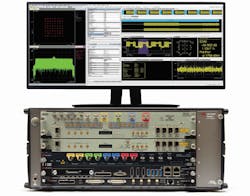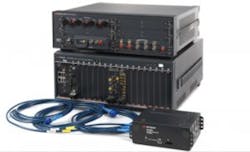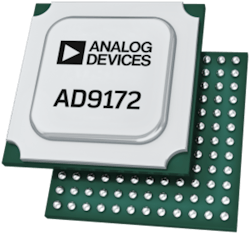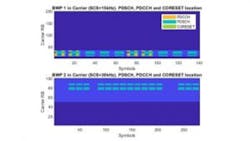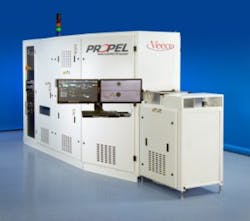Special Report: Many T&M challenges to overcome before true 5G rollout
The topic of 5G has been huge among our Evaluation Engineering audience for several years now. It’s a key subject at any electronics expo. On Oct. 25, President Donald Trump announced that his administration will form a National Spectrum Strategy aimed to make the United States the leader in “the global race to 5G,” about a month after the White House hosted its own 5G Summit. And with Verizon’s Oct. 1 launch of the first commercial 5G network in parts of Houston, Indianapolis, Los Angeles and Sacramento, along with announcing Panama City, FL as the fifth city that will receive 5G service, it’s easy to get caught up in the hype and have a sense that we are now fully immersed in the world of 5G technology.
But are we really there yet? It depends on the context. Obviously, an immense amount of engineering is going into 5G development to build its infrastructure and meet the eight key capabilities for IMT-2020 5G—with perhaps the two most notable being the capability to reach peak data rate of 20 Gbit/s, and latency as low as 1 ms. 5G has become front-and-center in the test & measurement industry, but its usage is still in its infancy.
EE attended a 5G symposium during mid-October at EDI CON USA in Santa Clara, CA, where ETS-Lindgren Director of Business Development James Young put into perspective what still needs to happen before 5G really becomes the norm.
“I like to say 5G has arrived only for the marketing departments,” Young told his keynote audience. “For those of us who have to test, we’re still a year away. 5G is more of a marketing thing right now. Everyone wants to be first. Let them. For testers, we’re in the ‘everything is beta’ stage. There’s still a lot of work that needs to be done. Keep your eyes open, keep reading, give us some time, and we’ll get there.”
Challenges ahead
Certainly, 5G presents numerous challenges to electronic test & measurement, from protecting current 4G investments, to the constant demand for higher speed. We asked a pool of vendors for their thoughts on the challenges 2019 will bring and how they are being addressed. Here’s their commentary:
Anne Stephan, VP of market segment mobile wireless communications at Rohde & Schwarz: "More so than any other technology turn in the past, 5G is both an evolution of existing LTE technology, as well as a revolution of new technologies that have never been used before in widespread commercial deployment. New technologies, such as massive MIMO and the use of millimeter wave, are pushing the boundaries of traditional test & measurement equipment. We are approaching an inflection point in the industry where companies will need to choose between trying to squeeze more out of their existing LTE-Advanced designs, or make the switch to 5G NR. For our customers, we provide them with the best possible solution either way; e.g., our CMW family of products that provides a test platform for both Gigabit LTE and 5G NR NSA testing."
Randy Oltman, 5G instrumentation manager at Analog Devices: “We see both challenge and opportunity. The new 6 GHz band (5.975-7.125 GHz) proposed by the FCC in the U.S. would open up a significant new spectrum in a frequency range that is less challenging to work with, compared to the 28 and 39 GHz mmWave frequencies. In the mmWave frequencies, many companies are working on or have delivered their first 28 and 39 GHz test solutions. We also see the start of second-generation design work where improved form factor, performance, and cost will combine to make for very challenging projects. This is all happening at a time when the over-the-air test methods are not yet finalized, adding risk to launching a second-generation instrument too early.”
Karolina Eklund, 5G outbound lead at Keysight Technologies: “All device and equipment vendors are building out manufacturing capacity and will need to develop cost-effective manufacturing test strategies, especially for over-the-air (OTA) test of mmWave devices. Operators, network equipment manufacturers, and device vendors will all be anxious to ensure that the first wave of 5G is a success even while the radio access network is rapidly evolving. Additional trials will be conducted to stress all aspects of 5G networks, including further mmWave propagation measurements, handover scenarios, mobility, interoperability, dual connectivity, throughput, latency, and capacity. Migration of the RAN architecture to implement standardized protocols, new layer splits and commoditization strategies will require new test models to validate performance and monitor behavior. Release 16 of the 5G standard in late 2019 will contain performance and test requirements for enhanced mobile broadband, massive machine type communications, and ultra-reliable low latency communications. The industry needs to be ready for the monetization of 5G vertical services in 2020.”
Lauri Viitas, VP of product and business development at Guzik Technical Enterprises: “Measurement speed for wideband signals is going to be, and already is, challenging for any test and measurement solution on the market. If you look at our patent portfolio, you will notice that more than half of them are all about how to deal with wideband signals >2 GHz and apply them to next-gen comms and radar applications.”
Ken Karnofsky, senior strategist for processing applications at MathWorks: “Baseband and system engineers need to learn the details of the 5G NR specification. It’s a steep learning curve, and few companies have adequate resources or in-house expertise to understand and implement a 5G-compliant design. To meet the high-throughput, high-bandwidth goals of 5G will require new tools and methodologies and hybrid designs spanning RF front end, antenna arrays, and digital components.”
Bill Rosas, CTO at Signal Microwave: “Implementation. The components required are well into development, now the users need to understand exactly how they operate and how to implement them into their systems. This requires the ability to test them by themselves and in the intended system.”
Piyush Sevelia, EVP of marketing at SiTime: “5G technology will put pressure on the timing solution far more than in the past, and for a number of reasons:
- Higher frequencies will mean shorter periods—more work has to be done in less time
- Bandwidth will be more carefully used; channel spacing will be tighter. That means less timing slop can be tolerated.
- Higher frequencies mean shorter ranges and less ability to go around corners. That means more radios, each covering a smaller area. Expect somewhere on the order of 10 or 20 5G radios for each current 4G radio.
- Here’s the kicker: a radio-to-radio latency budget of 130 ns. That breaks down to a 10-ns budget per network node between the two radios. For perspective, GNSS timing precision is 15 ns (99.7% of the time). This means less channel-to-channel interference, contributing to better bandwidth use. You might think this isn’t such a big deal to meet—at least under nominal conditions—but try making that timing stick across all conditions.”
Dr. Ajit Paranjpe, CTO at Veeco Instruments: “For 5G technology to meet stringent expectations, new GaN innovations will be needed to enable higher targeted frequencies (e.g. 28-and 39-GHz bands). From a technology standpoint, 5G suffers from attenuation issues, requiring multiple antennae to improve signal quality using spatial multiplexing techniques. Moreover, higher power efficiency and lower transmission losses result in significant power savings. Integrating multiple GaN transistors monolithically (GaN IC) opens up new functionality and capability. GaN has some limitations when operating at lower voltages (<5V)–issues being worked on by process experts, IDMs and research institutes.”
T&M vendors’ focus
5G research spans the gamut from algorithm development to channel sounding. So what areas of 5G are electronic test & measurement vendors currently focusing on?
Stephan, Rohde & Schwarz: "5G will rely on wider bandwidths, higher frequencies and more efficient use of spectrum to deliver its use cases. At Rohde & Schwarz, we focus specifically on providing the industry with best in class RF and high frequency test solutions across the entire wireless life cycle from R&D, to manufacturing, to field deployment. Since the finalization of 3GPP Release 15 this past year, there has been a significant shift towards addressing the manufacturing and field deployment needs of 5G, as the industry moves quickly towards commercial deployments in 2019. From leading device manufacturers to Tier-1 operators, Rohde & Schwarz has been working closely with our global customers to address the unique challenges in 5G test. From developing compact, turnkey over-the-air (OTA) test systems that solve the problem of testing 5G devices especially in millimeter wave, to first-of-its-kind field measurement tools that can access network coverage and performance at 28GHz and 39GHz, we are committed to our customer’s success."
Oltman, Analog Devices (ADI): “In addition to being a key supplier of various RF and data converter technologies for 5G wireless infrastructure, we are intensely focused on technology and solutions tailored to test and measurement companies in the research, design, production, and deployment phases of 5G. This work ranges from designing better components for 5G test and measurement to collaborating with customers to help them achieve instrument-grade performance.”
Viitas, Guzik Technical Enterprises: “Our core competency is custom real-time GPU and FPGA-based processing. We apply it to high-speed digital-to-analog and interleaved analog-to-digital converters to improve the direct RF conversion quality by reducing noise produced by the converters. The focus is to either do the analysis in the GPU-s, FPGA-s or provide the PC-based analysis software only the signals of interest by digital filtering and other signal reduction processing methods like DDC, etc.”
Eklund, Keysight: “One area of focus is connectorized, conducted measurements since these are impractical in many commercial mmWave applications. Therefore, the industry is embracing OTA test methods. As a dominant contributor to 5G OTA test method development in 3GPP, Keysight successfully influenced the organization to accept the compact antenna test range (CATR) as an OTA test method for validating 5G radios operating in millimeter-wave frequency bands. Mobile operators and device manufacturers use the CATR in multiple ways, including RF conformance test, parametric test, and protocol signaling.”
Hurtarte, LitePoint: “Single-box wireless test solutions that are easy to use, enabling our customers to run fast, at the lowest cost of test, for 5G mmWave and Sub 6GHz applications.”
Karnofsky, MathWorks: “MathWorks is focusing on enabling customers to design, prototype, and verify baseband IP and advanced RF technologies for 5G. Our products help customers accelerate IP development and prototyping, characterize performance, explore hybrid digital and RF front-end architectures, and verify conformance to the 5G standard.”
Rosas, Signal Microwave: “We focus on helping customers upgrade their coaxial connectors, especially for test. 5G includes higher frequencies than what had been used previously by the cellular market, and one of the of the first challenges this presents is in upgrading test infrastructure to handle the higher frequencies. This higher frequency test equipment relies on specific test connector types that are not familiar to the cellular market.”
Sevelia, SiTime: “Timing is the heartbeat of all electronics. SiTime develops tiny, low power microelectromechanical systems (MEMS) timing solutions that enable new 5G mobile and consumer experiences, and enterprise and industrial-use cases. SiTime’s MEMS timing solutions enhance system performance in the presence of stressors such as vibration, high temperature, and rapid thermal transients. SiTime’s patented MEMS timing technology helps meet the high performance requirements of emerging 5G applications.”
Paranjpe, Veeco: “Specifically, we focus on epitaxy development for compound semiconductor devices for 5G. GaAs based devices are already extensively used for current bands. We expect that GaN will also make inroads into next-generation 5G deployment. Pre-5G, GaN/SiC is increasingly being used in the macro cell. GaN on Si is a potential technology for the small cell space (micro/pico cells).”
Now on the market
Günter Pfeifer, market segment manager for mobile wireless communications at Rohde & Schwarz, told EE that R&S has a complete portfolio of test and measurement equipment that covers every aspect of the mobile wireless lifecycle, from R&D to manufacturing to field deployment. "Our market-leading position in the 4G/LTE turn allows our customers a seamless transition from LTE to 5G," Pfeifer said.
Pfeifer highlighted two recent R&S products that have been widely accepted for initial 5G testing. First, there is the R&S SMW series of signal generators, which are capable of generating signals with up to 2GHz of internal bandwidth up to 40GHz. Pfeifer mentioned they also have excellent RF characteristics of very low error vector magnitude (EVM) and very accurate power flatness over a wide bandwidth. Secondly, there is R&S' FSW series of signal analyzers that are capable of analyzing signals up to 90GHz, with an analysis bandwidth up to 2GHz. Pfeifer said the FSW series also has best-in-industry EVM performance and low phase noise.
Guzik has also integrated its instruments with Keysight Infiniium Oscilloscope Software Interface and Vector Signal Analysis (VSA 89600) software to provide flexible FPGA-accelerated measurements.
Earlier this year, Keysight was first to launch a 5G new radio-ready channel emulation solution. The Keysight PROPSIM F64 5G Channel Emulation Solution enables chipset, device, and network equipment manufacturers to characterize end-to-end system performance of the latest 4G and 5G base stations and mobile devices by emulating real-world radio conditions in the lab.
On the collaboration side, Keysight has been working closely with Verizon to launch the first 5G network emulation solutions in support of the first set of 5G technical specifications produced by Verizon’s 5G Technical Forum. For their new test facility, Verizon selected Keysight’s 5G OTA test solutions including 5G NES, which uses the UXM 5G Wireless Test Set to enable protocol and RF performance validation. In July this year, Keysight was selected as the only test, measurement and network visibility company to play a key role in a new European project—5G Verticals INNovation Infrastructure—to accelerate the acceptance of 5G across Europe.
ADI has other novel technologies under development that integrate multiple functions, such as LNAs and switches into a single IC, both reducing parasitics and saving valuable board space near the RF connections to the instrument.
Chandler, AZ-based Signal Microwave is currently marketing what it said is the first TRL/LRL turnkey calibration system for 0402 components that includes a PCB-based calibration kit, as well as DUT boards for 0402 components. After calibration using the TRL/LRL calibration board, the reference plane of the measurements are moved from the end of the cable to a point into the PCB less than .5 inches from the DUT.
SiTime just launched its new Emerald timing platform, which is a MEMS timing solution for all 5G wired and wireless infrastructure equipment. The company promotes Emerald as a major leap in the precision timing market, as it includes the world’s first Stratum 3E MEMS OCXO. “Emerald brings scalability and robustness to telecommunications and network base stations, radios and core routers,” Sevelia said, adding that Emerald is the only programmable OCXO in the industry.
SiTime recently announced a collaboration on MEMS timing for 5G with Intel. The collaboration is to work together on integrating timing solutions for Intel’s 5G multi-mode radio modems, with additional applicability to Intel LTE, millimeter-wave wireless, Wi-Fi, Bluetooth, and GNSS solutions. The partnership will help customers build 5G platforms to best take advantage of the increased performance and capacity that the 5G NR standard brings. Sevelia noted that the comms-5G market is expected to have capital expenditures of up to $2 trillion by 2023. Part of that will include deployment of 5G equipment in uncontrolled environments such as on buildings, street lamps, traffic lights, etc., and those electronics will be subject to harsh environmental stressors. “If timing is not reliable, mission-critical services will be shut down,” Sevelia said. ’The resiliency of SiTime’s MEMS timing will provide reliable performance in 5G deployments, and ensure that carriers are able to offer new and essential services.”
For more information:
About the Author






